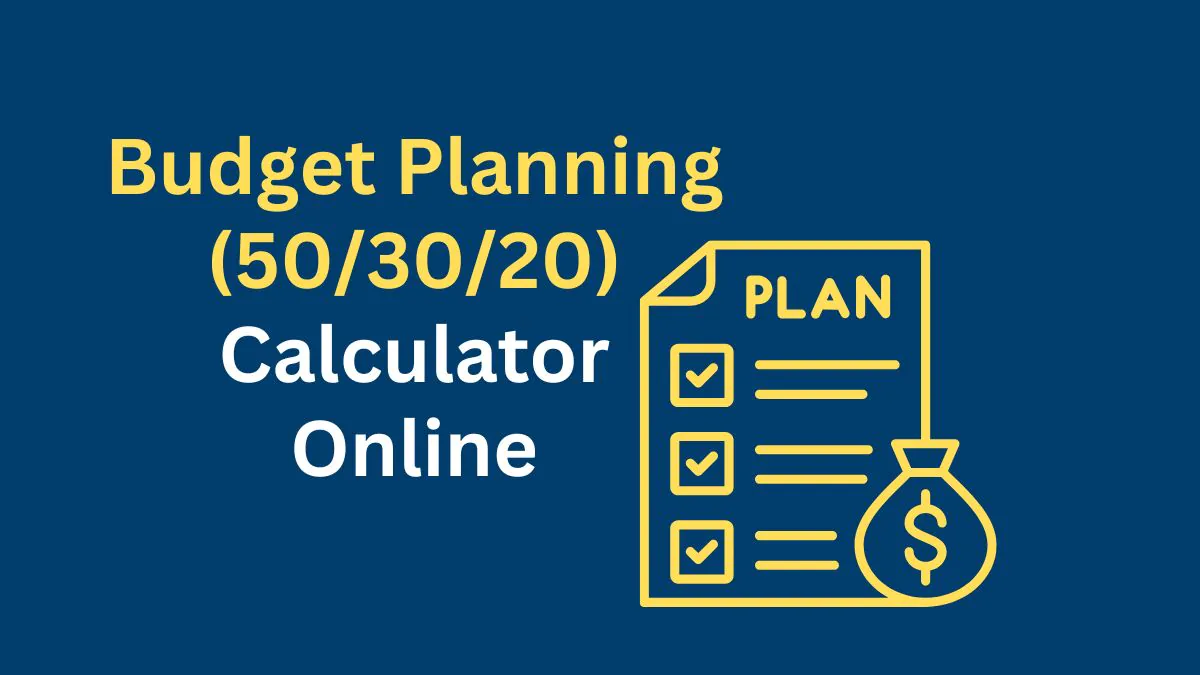Budgeting your Finances with the 50/30/20 Rule Calculator

Table of Contents
ToggleBudget Calculator
Needs (50%): 0
Wants (30%): 0
Savings (20%): 0
This document provides a comprehensive guide to implementing the 50/30/20 rule for budgeting method, a simple and effective way to manage your finances. The 50/30/20 rule divides your after-tax income into three categories: needs, wants, and savings or debt repayment. By following this structure, you can gain better control over your spending, prioritize your financial goals, and work towards a more secure financial future.

Understanding the 50/30/20 Rule
50% Needs: This portion of your budget should cover all your essential expenses. These are the costs you cannot avoid, such as housing, utilities, groceries, transportation, and insurance.
30% Wants: This category includes discretionary spending, such as dining out, entertainment, hobbies, and vacations. These are non-essential expenses that enhance your lifestyle.
20% Savings/Debt Repayment: This segment is dedicated to building your savings or paying off debt. It can include contributions to retirement accounts, emergency funds, or paying down credit card balances.
Our Free 50/30/20 Budget Calculator (INR) helps you create a tailored plan in seconds, whether you earn ₹30,000 or ₹3 lakh monthly.
Steps to Create Your 50/30/20 Budget
Calculate Your After-Tax Income: Determine your total monthly income after taxes. This is the amount you will use to allocate to the three categories.
Allocate Your Income:
Needs: Calculate 50% of your after-tax income for essential expenses.
Wants: Calculate 30% of your after-tax income for discretionary spending.
Savings/Debt Repayment: Calculate 20% of your after-tax income for savings and debt repayment.
Track Your Spending: Keep a record of your expenses in each category. This can be done through budgeting apps, spreadsheets, or even pen and paper.
Adjust as Necessary: If you find that you are overspending in one category, adjust your budget accordingly. The goal is to find a balance that works for you.
Why Trust Our 50/30/20 Rule for Calculator?
✅ Expert-Backed: Developed with insights from Indian CAs and financial planners.
✅ Zero Cost, No Ads: 100% free – no hidden charges or registration.
✅ Data Security: Calculations stay on your device; no personal data stored.
✅ India-Centric: Supports GST-inclusive expenses and variable incomes.
How It Works
- Enter Monthly Take-Home Salary: E.g., ₹50,000 (after TDS and deductions).
- Instant Allocation:
- Needs: ₹25,000 (50%) → Rent, groceries, EMI.
- Wants: ₹15,000 (30%) → Movies, Zomato orders, shopping.
- Savings/Debt: ₹10,000 (20%) → RD, emergency fund, loan prepayment.
- Customize & Download: Adjust categories and export as PDF for tracking.
Tips for Success
Review Regularly: Revisit your budget monthly to ensure you are on track and make adjustments as needed.
Set Financial Goals: Establish short-term and long-term financial goals to motivate your savings efforts.
Be Flexible: Life circumstances can change, so be prepared to adapt your budget as needed.
Benefits for Users
- Clarity: Track spends in ₹ with GST-friendly categories.
- Flexibility: Adjust for festivals, medical emergencies, or irregular incomes.
- Progress: Grow savings via SIPs or FD while managing household needs.
Research-Backed: Structured budgets reduce debt stress among households (source: RBI Financial Literacy Report).
Your Privacy, Our Priority
- Zero Data Storage: Calculations done locally on your device.
- SSL Encrypted: Secure access for all users.
- Transparent Math: Formulas align with the 50/30/20 framework.
Start Budgeting in ₹ Today!
Take charge of your finances with our Free 50/30/20 Budget Calculator – optimized for Indian salaries and lifestyles.
The 50/30/20 rule for budgeting method is a straightforward approach to managing your finances. By categorizing your spending and prioritizing your needs, wants, and savings, you can achieve greater financial stability and work towards your financial goals. Start today by calculating your budget and taking control of your financial future!
For more financial tools,
Disclaimer
Well Returns is not a financial adviser. The content provided here is for informational purposes only and is intended to offer a brief overview and general knowledge. It is not a substitute for professional financial advice. Please consult a qualified financial adviser before making any financial decisions or investments.
Related FAQs
Reduce discretionary spends or explore cost-sharing
Yes! Input total household income (e.g., ₹80,000) and allocate for joint expenses.
Input an average monthly income and revise allocations quarterly.






